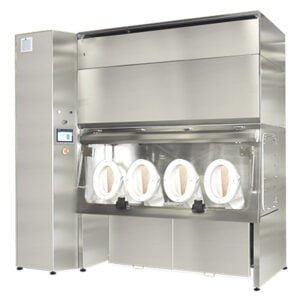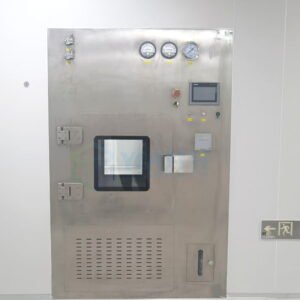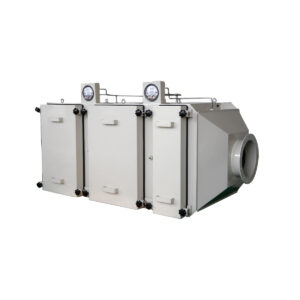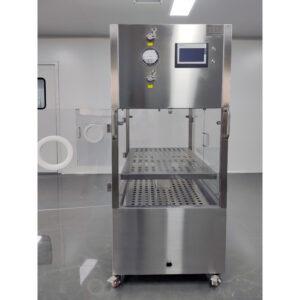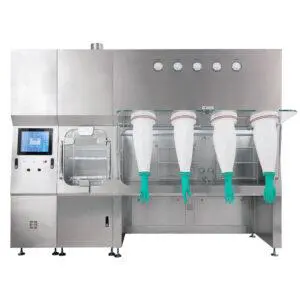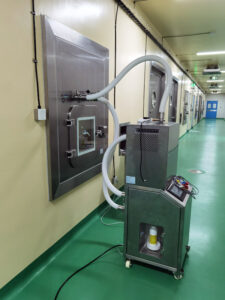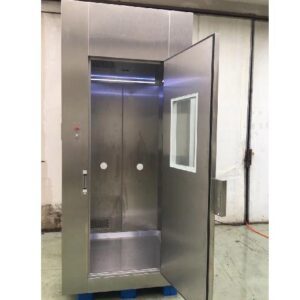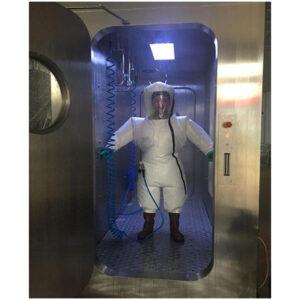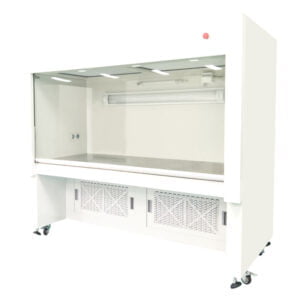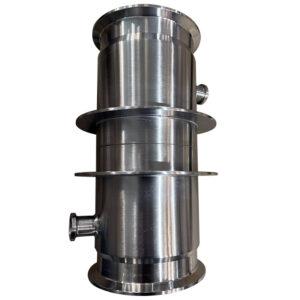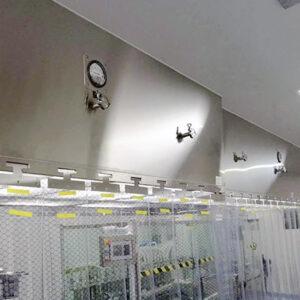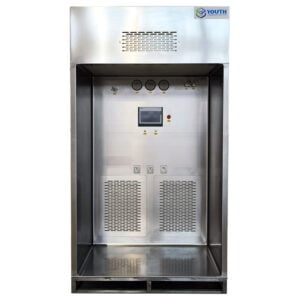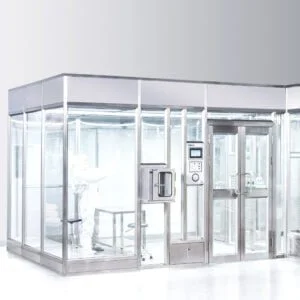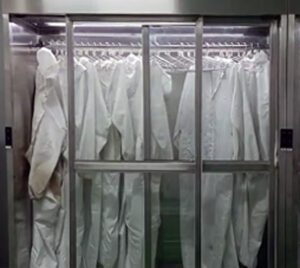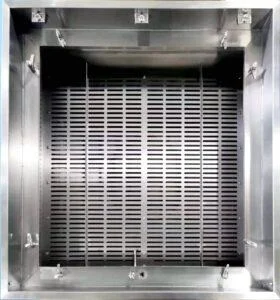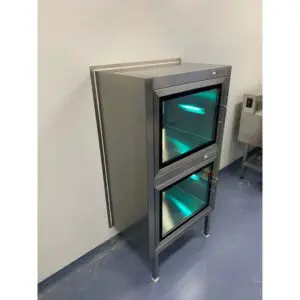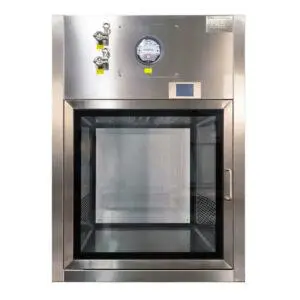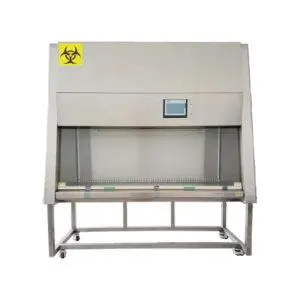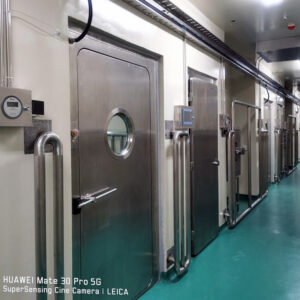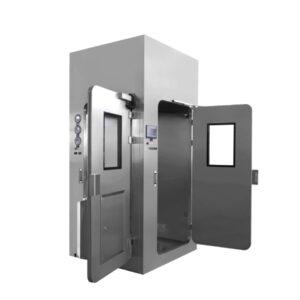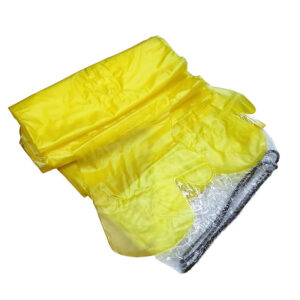In the rapidly evolving world of cleanroom technology, laminar air flow units remain a crucial component for maintaining sterile environments in various industries. As we approach 2025, understanding the potential repair costs for these essential devices becomes increasingly important for businesses and laboratories alike. This comprehensive guide will explore the projected expenses associated with maintaining and repairing laminar air flow units, helping you plan and budget effectively for the coming years.
The cost of laminar flow unit repairs can vary significantly depending on several factors, including the unit's age, type, and the specific issue at hand. As technology advances and manufacturing processes improve, we may see shifts in repair costs and maintenance requirements. This article will delve into the various aspects that influence these costs, providing you with a clear picture of what to expect in 2025.
As we transition into our main discussion, it's crucial to recognize that proactive maintenance can significantly reduce the need for costly repairs. However, when repairs are necessary, understanding the potential expenses can help you make informed decisions about your equipment's future.
According to industry experts, the average cost of laminar flow unit repairs in 2025 is projected to range from $500 to $3000, depending on the complexity of the issue and the unit's specifications.
What factors will influence laminar air flow unit repair costs in 2025?
The repair costs for laminar air flow units in 2025 will be influenced by various factors, each playing a significant role in determining the final expense. Understanding these elements can help you anticipate potential costs and make informed decisions about your equipment maintenance.
Key factors include the age and model of the unit, the specific components requiring repair, and the availability of replacement parts. Additionally, advancements in technology may introduce new repair techniques or components that could affect overall costs.
Deeper analysis reveals that labor costs, which are expected to rise in many regions, will significantly impact repair expenses. The complexity of modern laminar flow units may require specialized technicians, potentially increasing service fees.
Industry data suggests that labor costs could account for up to 60% of the total repair expenses for laminar air flow units by 2025.
| Factor | Estimated Impact on Cost |
|---|---|
| Unit Age | 10-30% increase for older models |
| Component Complexity | 15-40% variation based on part |
| Labor Costs | 40-60% of total repair cost |
| Technology Advancements | -5% to +20% impact |
In conclusion, while several factors will influence repair costs, staying informed about these elements can help you budget more effectively and make strategic decisions about your laminar air flow units.
How will HEPA filter replacement costs trend in 2025?
HEPA filter replacement is one of the most common and crucial maintenance tasks for laminar air flow units. As we look towards 2025, understanding the projected costs for this essential component is vital for proper budgeting and maintenance planning.
Current trends indicate that while HEPA filter technology continues to advance, the basic principles remain the same. However, improvements in filter efficiency and lifespan may impact replacement frequencies and costs.
A deeper dive into the subject reveals that environmental regulations and manufacturing processes could play a significant role in shaping HEPA filter costs. As standards become more stringent, we may see an increase in production costs reflected in the final price of these filters.
Industry forecasts suggest that HEPA filter replacement costs for laminar air flow units could range from $300 to $1000 in 2025, depending on the size and specifications of the unit.
| HEPA Filter Type | Estimated Cost Range (2025) |
|---|---|
| Standard Grade | $300 – $600 |
| High Efficiency | $500 – $800 |
| Ultra-Low Penetration | $700 – $1000 |
In conclusion, while HEPA filter replacement will continue to be a significant aspect of laminar air flow unit maintenance, advancements in technology and changing regulations may influence costs. Staying informed about these trends will help you plan for future expenses effectively.
What role will preventive maintenance play in reducing repair costs?
Preventive maintenance is set to play an increasingly crucial role in managing the Cost of laminar flow unit repairs as we approach 2025. By addressing potential issues before they escalate, businesses can significantly reduce the likelihood of costly repairs and extend the lifespan of their equipment.
Regular maintenance checks, timely filter replacements, and proper cleaning procedures are key components of an effective preventive maintenance strategy. These practices not only ensure optimal performance but also help identify minor issues before they become major problems.
Delving deeper, we find that advancements in predictive maintenance technologies, such as IoT sensors and data analytics, may revolutionize how we approach laminar air flow unit maintenance. These technologies could provide real-time monitoring and early warning systems, further reducing the risk of unexpected breakdowns.
Studies indicate that implementing a comprehensive preventive maintenance program could reduce laminar air flow unit repair costs by up to 30% by 2025.
| Maintenance Action | Estimated Cost Savings |
|---|---|
| Regular Inspections | 10-15% |
| Timely Filter Replacement | 15-20% |
| Proper Cleaning Procedures | 5-10% |
| Predictive Maintenance Tech | 10-25% |
In conclusion, investing in preventive maintenance is likely to yield significant cost savings in the long run. As technology continues to evolve, the potential for even more effective maintenance strategies grows, making it an essential consideration for any facility using laminar air flow units.
How will technological advancements impact repair procedures and costs?
As we look towards 2025, technological advancements are poised to significantly impact the repair procedures and associated costs for laminar air flow units. These innovations have the potential to streamline diagnostics, improve repair efficiency, and potentially reduce overall expenses.
One key area of advancement is in diagnostic tools. More sophisticated and accurate diagnostic equipment may allow technicians to pinpoint issues more quickly and accurately, reducing labor time and minimizing the risk of misdiagnosis.
Furthermore, emerging technologies such as augmented reality (AR) could revolutionize repair procedures. AR tools might allow technicians to access real-time schematics and repair guides, potentially speeding up complex repairs and reducing errors.
Industry experts predict that by 2025, advanced diagnostic tools and AR-assisted repairs could reduce laminar air flow unit repair times by up to 25%, potentially lowering labor costs.
| Technology | Potential Impact on Repair Process |
|---|---|
| Advanced Diagnostics | 15-30% faster problem identification |
| Augmented Reality | 20-40% reduction in complex repair times |
| IoT Sensors | 10-20% improvement in preventive maintenance |
| AI-assisted Troubleshooting | 25-35% increase in first-time fix rates |
In conclusion, while new technologies may require initial investment, they have the potential to significantly reduce repair costs and downtime in the long run. Facilities that embrace these advancements may find themselves at a competitive advantage in managing their laminar air flow units.
What impact will environmental regulations have on repair and maintenance costs?
Environmental regulations are expected to play an increasingly significant role in shaping the repair and maintenance landscape for laminar air flow units as we approach 2025. These regulations, aimed at reducing environmental impact and improving energy efficiency, may influence both the materials used in repairs and the procedures followed.
Stricter regulations could lead to the development of more environmentally friendly components and cleaning agents. While these may come with higher upfront costs, they could potentially offer long-term benefits in terms of energy efficiency and reduced environmental impact.
A deeper analysis reveals that compliance with new regulations may require additional training for technicians and possibly the acquisition of new tools or equipment. These factors could contribute to an initial increase in repair and maintenance costs.
Industry analysts project that compliance with new environmental regulations could increase laminar air flow unit repair and maintenance costs by 10-15% initially, but may lead to long-term savings through improved energy efficiency.
| Regulatory Impact | Estimated Cost Effect |
|---|---|
| Eco-friendly Components | 5-10% increase |
| Technician Training | 3-7% increase |
| New Tools/Equipment | 2-5% increase |
| Energy Efficiency Improvements | 10-20% long-term savings |
In conclusion, while environmental regulations may initially drive up costs, they also present opportunities for long-term savings and improved sustainability. Facilities that proactively adapt to these changes may find themselves better positioned for the future.
How will the availability of replacement parts affect repair costs in 2025?
The availability of replacement parts is a critical factor that will significantly influence the Cost of laminar flow unit repairs in 2025. As technology evolves and older models become obsolete, sourcing components for repairs can become increasingly challenging and potentially more expensive.
Manufacturers' policies regarding the production and stocking of replacement parts for older models will play a crucial role in determining availability and cost. Some may choose to discontinue parts for older units, pushing users towards newer models, while others may continue to support older equipment.
A deeper look into this issue reveals that advancements in 3D printing technology could potentially revolutionize the replacement parts landscape. This technology might allow for on-demand production of certain components, potentially reducing wait times and costs for some repairs.
Industry forecasts suggest that by 2025, the cost of replacement parts for laminar air flow units could increase by 15-25% for models over 10 years old due to reduced availability.
| Factor | Impact on Part Availability |
|---|---|
| Model Age | 20-30% decrease for 10+ year old models |
| Manufacturer Policy | 10-40% variation based on brand |
| 3D Printing Capability | 5-15% increase in availability for printable parts |
| Global Supply Chain Issues | 10-20% potential decrease in availability |
In conclusion, the availability of replacement parts will continue to be a significant factor in repair costs. Facilities may need to consider the long-term supportability of their equipment when making purchasing decisions and explore innovative solutions like 3D printing to mitigate potential issues.
What role will skilled technician availability play in future repair costs?
As we approach 2025, the availability of skilled technicians specializing in laminar air flow unit repair is expected to play a crucial role in determining repair costs. The increasing complexity of these units, coupled with advancements in technology, demands a higher level of expertise from repair technicians.
The demand for specialized technicians is likely to increase, potentially leading to higher labor costs. This trend may be further exacerbated by retirements in the current workforce and the need for continuous training to keep up with technological advancements.
A deeper analysis reveals that geographical location could significantly impact technician availability and associated costs. Urban areas with a higher concentration of cleanroom facilities may have more readily available expertise, while rural or remote locations might face challenges in accessing skilled technicians.
Industry experts predict that by 2025, labor costs for highly skilled laminar air flow unit repair technicians could increase by 15-20% due to growing demand and specialized expertise requirements.
| Factor | Impact on Technician Availability |
|---|---|
| Geographical Location | 10-30% variation in availability |
| Technological Complexity | 15-25% increase in required skill level |
| Retirement Rates | 5-10% potential decrease in available technicians |
| Training Programs | 10-20% increase in new technicians entering the field |
In conclusion, the availability of skilled technicians will be a critical factor in determining repair costs for laminar air flow units in 2025. Facilities may need to consider investing in training programs or developing relationships with service providers to ensure access to qualified technicians when needed.
As we conclude our exploration of laminar air flow unit repair costs projected for 2025, it's clear that several factors will play crucial roles in shaping the financial landscape of maintenance and repairs. From technological advancements and environmental regulations to the availability of parts and skilled technicians, each element contributes to the overall cost structure.
While some factors may lead to increased costs, others present opportunities for long-term savings and improved efficiency. The key for facilities utilizing laminar air flow units will be to stay informed about these trends and adapt their strategies accordingly.
Preventive maintenance, embracing new technologies, and considering long-term supportability in purchasing decisions will be crucial in managing repair costs effectively. Additionally, staying compliant with evolving environmental regulations may present initial challenges but could lead to significant benefits in the long run.
As we move towards 2025, the landscape of laminar air flow unit maintenance and repair will continue to evolve. By understanding these trends and planning accordingly, facilities can ensure they are well-prepared to manage their equipment efficiently and cost-effectively in the years to come.
YOUTH remains committed to providing high-quality laminar air flow units and support services, helping facilities navigate these changes and maintain optimal performance of their critical cleanroom equipment.
External Resources
Laminar Flow Hood Maintenance: Best Practices – This article provides comprehensive guidance on the maintenance of laminar flow hoods, including cleaning frequencies, HEPA filter care, and troubleshooting common issues.
UCSD Biosafety Cabinet Certification, Maintenance & Repair – This document outlines the pricing and services for the maintenance and repair of biosafety cabinets, including laminar flow units.
Uses of Laminar Flow Hoods – This resource discusses the cost-effectiveness of laminar flow hoods and provides information on annual maintenance costs.
Laminar Airflow Workstations – Nuaire – This brochure from Nuaire details their laminar airflow workstations, including features that reduce maintenance costs and extend the lifespan of HEPA filters.
Laminar Air Flow Maintenance Service – This page lists various service providers offering laminar air flow maintenance services, including their prices.
Lab Manager – Equipment Maintenance – This resource provides general information on laboratory equipment maintenance, which can be applicable to laminar flow units.
Thomasnet – Laminar Flow Equipment Suppliers – This page lists suppliers of laminar flow equipment, which may offer maintenance and repair services.
Controlled Environments Magazine – Cleanroom Maintenance – This article discusses best practices for cleanroom maintenance, which includes information relevant to laminar flow units.
Related Contents:
- Pharma Lab Laminar Air Flow Unit Applications
- Industrial vs Lab Laminar Air Flow Units
- Laminar Air Flow Unit Size Guide for Labs 2025
- Laminar Air Flow Units in Food Packaging 2025
- Vertical vs Horizontal Laminar Flow Units 2025
- UV-Equipped Laminar Air Flow Units 2025
- Hospital Pharmacy Laminar Unit Requirements
- Microbiology Lab Laminar Air Flow Unit Uses
- Mobile Laminar Air Flow Units: Pros and Cons



